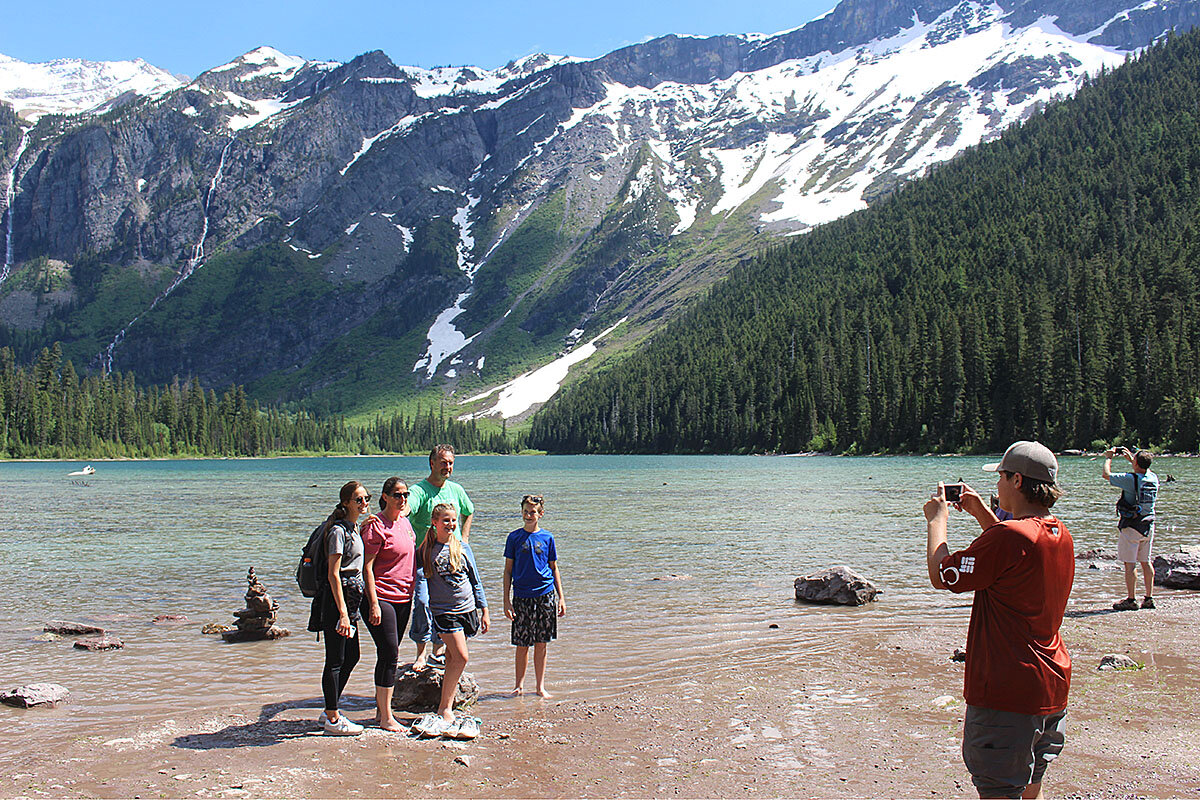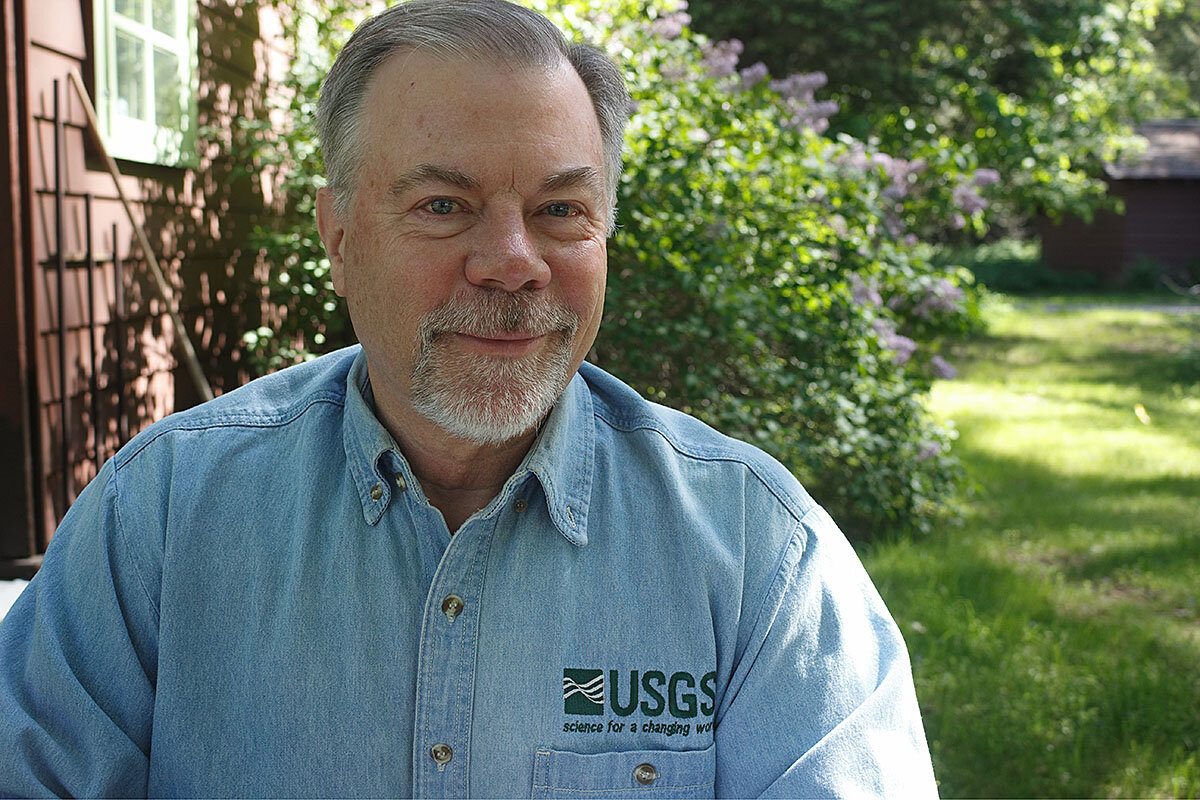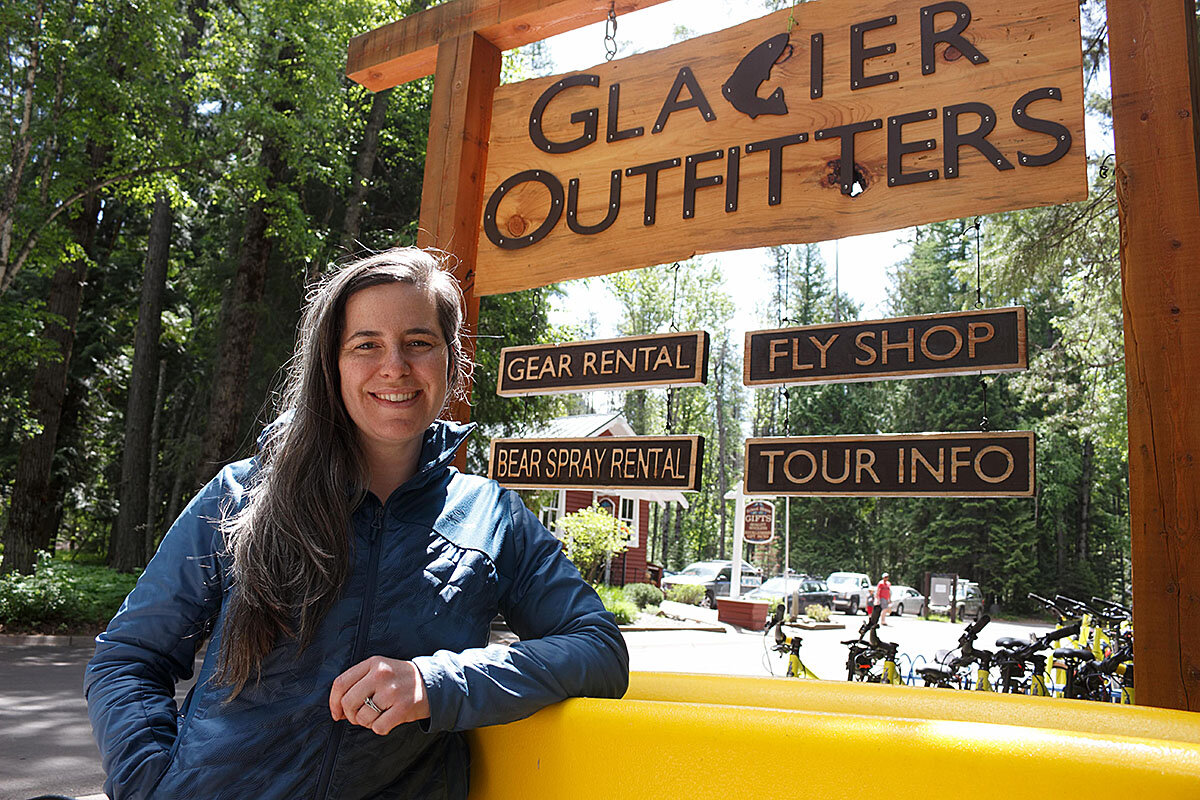Glacier National Park’s name will outlive its glaciers
Loading...
| Glacier National Park, Montana
Maria Clemens took time off from her post-college summer job on a Montana ranch to hike into this national park to see a glacier. “I don’t like it,” she pronounced on the trail as she returned. “It’s just kind of sad to see.”
Her displeasure is over the ever-shrinking glaciers that gave this park its name. There were about 150 of them in 1850, now there are about 25, and they are projected to be gone before Ms. Clemens reaches her 40s.
The looming ice rivers have been ravaged by the changing climate. Glaciologists have penciled in 2030 for the glaciers’ obituary, though some ice may linger a bit. As the last surviving glaciers shrivel into shaded folds of the mountains, snow whipping over the Continental Divide may give them “a little lease on life just at the very end,” says Dan Fagre, a glacier expert at the United States Geological Survey. But, he says, “it won’t change the ultimate prognosis.”
Why We Wrote This
Montana's Glacier National Park will be glacier-free by 2030 say scientists. As the massive ice sheets recede, they leave behind questions about how the places most affected by climate change can retain their sense of identity. This story is part of an occasional Monitor series on ‘Climate Realities.’
What, then, is the future of a million-acre national park that draws 3 million visitors each year when its marquee lure is gone?
Officially, of course, the park will carry on.“Ninety percent of visitors won’t notice a difference,“ predicts the park superintendent, Jeff Mow. “There will always be white and snow on the mountains in Glacier. It’s just how much of that is actually a glacier.”
“What Glacier has is a powerful landscape,” he says. “Visitors are still inspired, taken aback, just awed by the landscape here.”
The glaciers’ legacy, though, is up to those visitors. Will Glacier National Park become a nettlesome symbol of what we lost, pricking our conscience as did the once-dying bald eagle, and motivating action? Or will the formerly majestic glaciers and the wildlife they support wink out quietly as tourists continue to swarm the green-layered mountains for Instagram moments, largely oblivious to what is no longer in their pictures?
Leaving their mark
Al Gore once said the place will have to be renamed “The Park Formerly Known as Glacier.” That is unlikely to happen; glaciers are the origin story of the park’s creation, the brutal sculptor that gouged the Earth into breathtaking valleys and lakes. They deserve artists’ credit.
And to rename the park would be too blunt an admission of society’s failures to heed the warnings of climate change.
Already, that point is clear to many. A small surge of visitors is coming to pay last respects to the cold colossi that once ruled and shaped the Earth. And they are ready to lay blame for the glaciers’ fate.
“We should do a better job of protecting this Earth,” says Britney Herbert, who came from Los Angeles to see the glaciers because “we should see them before they go.”
“It’s surreal,” adds her hiking companion, Patrick Yarbrough, as a cloud tumbled over the mountains and spattered the trail with drops. “We take the land so much for granted.”
Above them, three glaciers – Grinnell, Salamander, and Gem – seemed weary with age, and slumped toward the valley. Their threadbare skirts of ice were tattered, revealing the hard black mountain underneath.
Fanning the flames
Dr. Fagre has been studying the glaciers here since 1991, now from the U.S. Geological Survey climate change office in a small red cabin inside the park. Using annual measurements and historical photos, he helped document a 39% loss of ice on the glaciers in 50 years.
“They don’t look so good,” Dr. Fagre acknowledges of the glaciers. But he sees them as only one link in a chain.
“If you have such a profound change that the glaciers disappear,” he says, “then you are also affecting the snow pack, you are affecting the tree growth, you are affecting forest fires, you are affecting animal migration, you are affecting a whole host of things that underpin a mountain ecosystem.”
Mr. Mow, who has run the park for six years, worries chiefly about how fires in the drying climate will impact the park and its visitors. He has battled three large fires in the past four years, and experts predict fires will be hotter and more frequent.
“Wildfire could become the dominant landscape change force” of a future Glacier National Park, he says.
Fires in the park scar the landscape for years. Even fires hundreds of miles away bring disruptive smoke – huge Canadian fires in May cloaked Glacier in smoke.
“I had to lay off all my employees” last year when a fire across Lake McDonald choked the air, says Michelle Handlin Hampton, who co-owns Glacier Outfitters at Apgar Village inside the park, and rents bikes, boats, and camping supplies. “I couldn’t have them working in toxic air, and no customers were coming.
“Climate change is a big factor if I can continue this business,” says Ms. Hampton. “I don’t know how it will affect the resources I have to give to people – the view, clean air, clean water, and the animals they come to see.”
Cascade effects
The first biological changes may be hard to see. Two species of flies that depend on the cold clear glacier runoff may disappear. The native bull trout also thrives in glacial streams, and is finding its habitat shrinking.
Any disruptions in the ecological chain create “a cascade” of other changes, says University of Montana ecology professor Jim Elser, director of the Flathead Lake Biological Station.
“All the other things that climate is doing besides making glaciers disappear are playing out in the vegetation, in the forest structure, in the forest fires, drought stress, effects on white bark pine. ... As the snow pack starts to recede, the rivers are going to be warming up.
“Certainly fishermen are going to notice when they can’t catch Westslope trout or bull trout anymore,” he predicts. “When people start seeing white bark pine forests disappear ... grizzly bears are dependent on white bark pine. When grizzly bears disappear from the landscape people will certainly notice that.
“Glacier National Park is sort of the type specimen of climate change ... it’s ground zero, almost,” Professor Elser says. “It’s that juxtaposition of fire and ice. Glacier National Park should be cold, mountainous, should be safe from those kinds of things. But no, the place is burning.”
This story was produced with support from an Energy Foundation grant to cover the environment.








